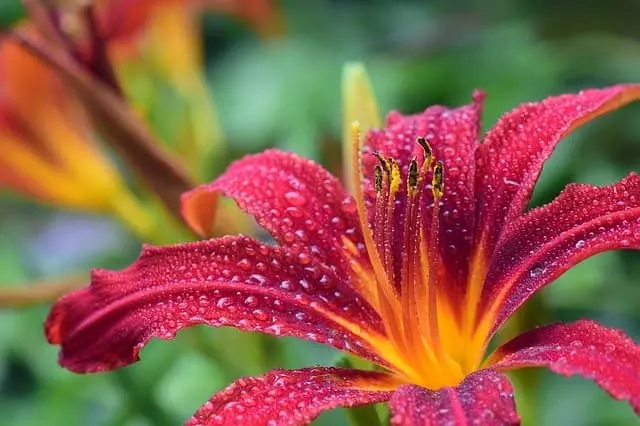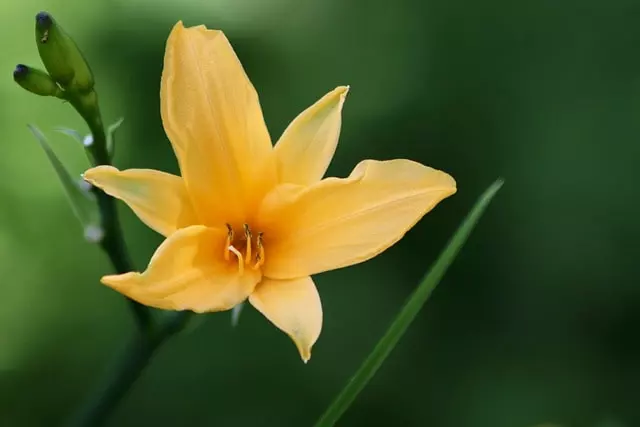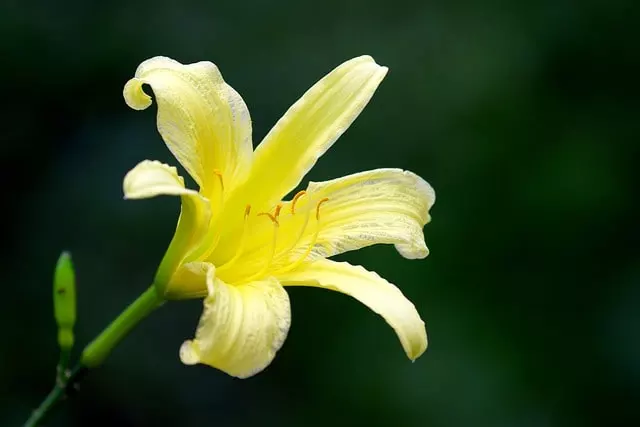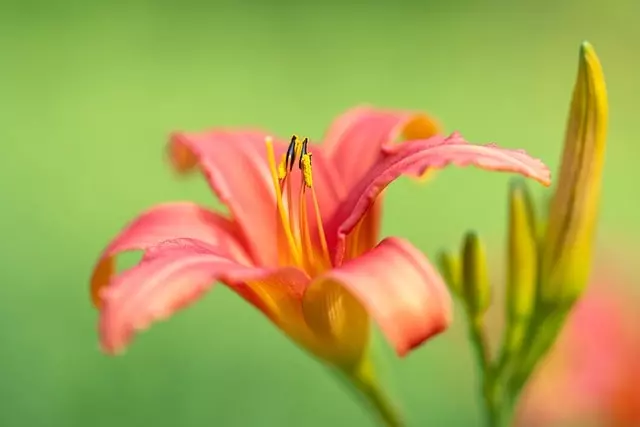The Daylilies, receive several very original vulgar names, such as Turkish lily, St. John’s lily, or morning flower. Learn all about how to grow Daylilies in this article.
Although distantly related to the lilies, they do not belong to the lily family and therefore are neither lilies nor lilies.
The common name that best fits them is morning flower because in most species of Daylilies, their flowers open at dawn and fade at dusk…their flowers last only one day.
You may be wondering, what is the point of putting a plant in the garden with such a short flowering period? Well, because its faded flowers are replaced the next day by a new flower, in a succession that can last for months.
This bulbous plant can be exciting, just look at the American Hemerocallis Society in the United States, which seeks to support its study, cultivation, and selection.
Table of Contents
Description
Daylilies are herbaceous and perennial plants, growing from rhizomatous thickened roots.
Unlike many bulbous plants, it is not necessary to lift them from the ground at the end of the season, they naturalize perfectly and behave like perennial plants.
They are very hardy and withstand cold and heat perfectly, retaining much of their leaves during the coldest season.
They are not very tall plants, at the most, they are about 32″ (80 cm) high.
Daylilies Flowers
Its flowers are very similar to those of lilies, but so are its leaves, elongated, narrow, and flexible, with a lanceolate shape.
The flowers are presented in small groups of 2 to 5. They appear from a floral stem that grows from the stem.
They are very large and showy flowers, with 6 star-shaped sepals.
Most of the Daylilies plants currently on sale are hybrids, obtained by crossing different species of the same genus, which allow longer blooms and more unusual flower colors.
Daylilies can be found blooming from late winter to autumn. They can be used as summer or autumn bulbs.
Their flowers can be striking for different reasons, such as their shape or size, although their coloration will not leave us indifferent either, with flowers in yellow, orange, red, pink, or purple tones, in simple, gradient, or bicolor tones.

Use Of Daylilies in Gardening
In gardening, they are mainly used as landscape flowers, as they are very rustic and naturalize without problems.
If you decide to put them in your garden you will enjoy a beautiful and long flowering. You can place them in flowerbeds, pots, planters, or among the lawn, where they do not mind frequent watering or soil conditions.
What Daylilies flowers are not suitable for is cut flowers, their ephemeral life prevents it.
Varieties Of Daylilies:
Some of the best-known varieties of Daylilies are:
- Hemerocallis fulva kwanso
- Hemerocallis fulva var. Flore Pleno
- Hemerocallis Daring Deception, a cultivar of Hemerocallis bicolor.
If you want to grow quality Daylilies we recommend these bulbs.
Hemerocallis fulva or these amazing bulbs.

How to Grow Daylilies
Follow these instructions for how to grow Daylilies in the garden or pot:
- Planting can be extended from late summer, until early spring.
- The rhizome should be buried about 1.2″ (3 cm) below its collar.
- The distance between plants is recommended to be about 24″ (60 cm).
- For best results, they should be planted in groups.
You already know how to grow Daylilies, now we will explain how to take care of them so that they grow correctly.
How to Care Daylilies
Daylilies are very appreciated in gardening for their hardiness, enduring all kinds of situations: drier, colder or wetter climates, with very different soils, and they do not need to be dug up at the end season.
They prefer certain conditions, where their growth will be better and the results will be optimal, which are those that I now detail:

How to Grow Daylilies – Soil
Although they could perfectly survive in very different situations, the soil that best suits Daylilies is loose, with good drainage.
The ideal is to prepare the soil well before planting, adding good quality mulch, which has a good amount of organic matter, which can be offered by adding horse manure or commercial guano, which are already treated and have no odor.
As I said, they could survive in muddy soil, but we would risk having root problems, so it is better to lose and well-aerated soil.
Sun Exposure
Its ideal location is in full sun as long as the climate is not too dry, or too hot.
With a full sun location, we ensure a more spectacular flowering, but they are “all-terrain”, they will also withstand semi-shade.
In places with very high temperatures, it may be more convenient a semi-shaded location, than one in full sun.
How to Grow Daylilies – Watering
They are plants that resist well the periods of drought but in exchange for a smaller flowering.
My advice is to water them like the rest of the garden plants. In summer watering should be frequent, so that the soil never ends up drying out completely, to reduce and eliminate when the colder and rainy seasons arrive.
Fertilizing
As they are perennial plants, they should be fertilized with mature manure or good quality compost at the end of winter, beginning of spring.
It is also advisable to make an extra contribution of chemical fertilizer when flowering begins, based on potassium. To grow Daylilies and make them grow properly we recommend this product (Order it here).
- Improves daylily bloom
- Improves daylily plant growth
- Beautiful blooms
How to Grow Daylilies – Pests
They are not very pest-prone plants, but in the garden, they are exposed to typical pests such as aphids, thrips, red spider mites, slugs, and snails.
Keeping slugs and snails away is very simple, just sprinkle some ash or coffee grounds around the plant and they will stay away.
For the rest, you should always be vigilant, using insecticides appropriate to each pest, when they appear.
How to Propagate Daylilies
The best way to propagate Daylilies is by root division.
It is not convenient to do it every year, the ideal is every 5 to 7 years, once the tuberous roots have grown enough to be able to divide without any risk.
The best time is right at the beginning of autumn or early spring.
Use a sharp knife, taking care to leave enough shoots on each portion so that there are no problems of failure.
Once the roots are separated, replant in a suitable soil with a substrate rich in organic matter.
We hope you found this article on how to grow Daylilies useful. We recommend our article about How to Grow Agapanthus Step by Step.



